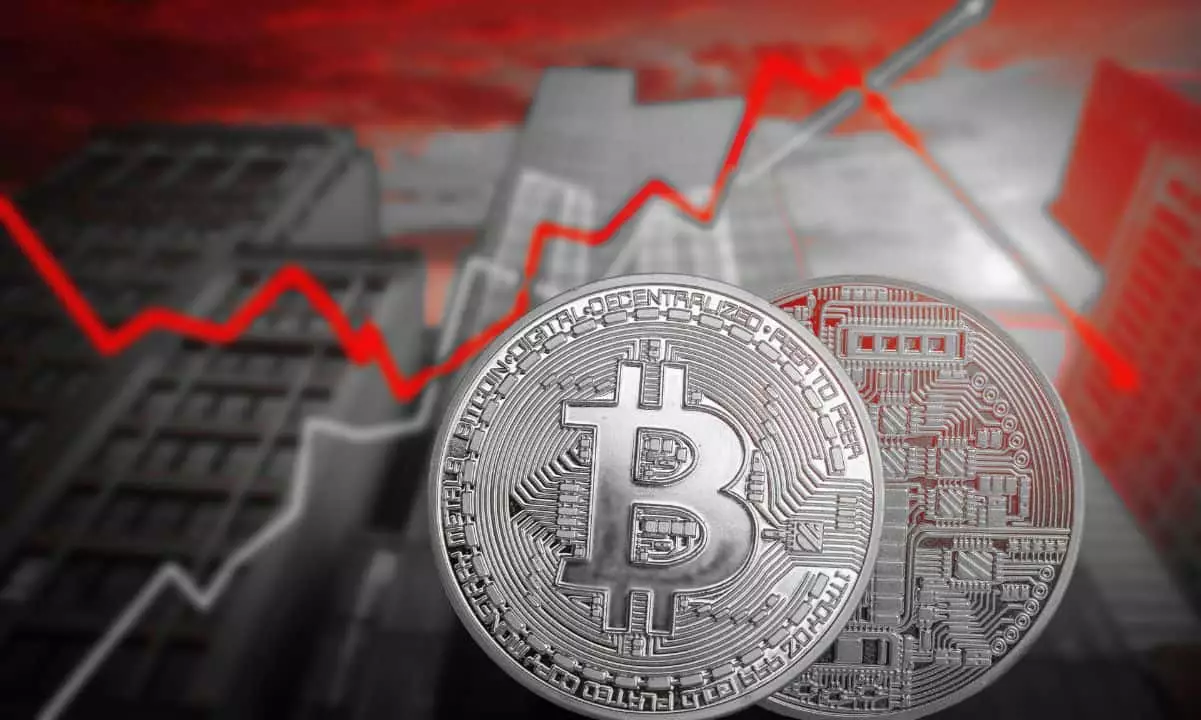The era of trade stability that many economists had hoped would last indefinitely seems to have come to a screeching halt in 2025. With President Trump initiating extensive import tariffs, the market’s scaffolding is beginning to show signs of strain. What was once a predictable economic landscape has transformed into a complex maze of tariffs and trade rhetoric, leaving investors scrambling for solid footing. The focus has shifted dramatically from traditional asset classes to a more volatile yet promising cryptocurrency market, particularly Bitcoin.
In a world where trade tensions have implications beyond immediate financial frameworks, Bitcoin’s correlation with traditional markets has become a key barometer of its market health. Standing at a precarious juncture, the cryptocurrency appears to reflect broader economic uncertainties. The recent Binance Research report indicates a significant shift in Bitcoin’s relationship with equities; initially negative correlations have risen sharply as apprehension and volatility became the norm in financial discussions. This volatility begs the question: is Bitcoin becoming more intertwined with traditional risk assets, or is it emerging as a separate haven amidst chaos?
Macro Implications: Analyzing the Correlation Profile
The influence of macroeconomic factors on Bitcoin cannot be ignored. During periods of escalating trade tensions, Bitcoin’s correlation with equities surged to 0.47, while its historic alignment with gold saw a notable decline, prompting many to wonder if Bitcoin is shedding its skin as a non-correlated asset. This newfound correlation is concerning for those who have long touted Bitcoin as a safe haven from systemic risk. The performance of the cryptocurrency during times of economic distress showcases its dual personality: a digital asset deeply affected by the sentiments of traditional investors and yet, still exhibiting resilience.
As we examine Bitcoin’s fluctuation in correlation, the results reveal a nuanced picture. The battle between its role as a safe haven and its alignment with risk sentiment showcases the volatile nature of financial markets. The recent high-stakes engagement with import tariffs has turned Bitcoin’s character from that of a rogue player challenging traditional finance to one that dances to the drumbeat of macroeconomic uncertainty.
The Long-Term Perspective: Will Bitcoin Retain Its Identity?
Despite the recent challenges, it’s crucial to consider Bitcoin’s long-term trajectory. Historical data shows that Bitcoin has often reverted to its status as a distinct asset class after episodes of heightened correlation. It’s this very independence that enthusiasts cling to, hoping that the cryptocurrency can detach itself from the whims of conventional equities during tumultuous times. The critical question lingering in the air is whether BTC can recapture its historical low correlation with traditional markets, particularly in light of past cries of impending economic doom—as witnessed in the 2023 banking crisis.
Moreover, a shift in global monetary policy could provide Bitcoin the perfect storm to reclaim its throne as an independent, inflation-resistant asset. With inflation hitting earlier records and central banks hinting at potential rate cuts, the stakes have never been higher for Bitcoin investors. Will the token reassert itself as the non-sovereign asset it was heralded to be, or will it succumb to the influence of governmental interventions?
Navigating Stagflation: The Future of Cryptocurrency
As we progress deeper into this era of stagflation and protectionism, Bitcoin finds itself facing an intricate web of challenges. The link between trade policy, inflation, and cryptocurrency is not merely theoretical; it reflects real-time market shifts with extensive repercussions for investors. The prevailing concerns about a potential decline in investor sentiment amid intensifying trade conflicts only underscore the precarious position of cryptocurrencies.
However, it’s essential to consider that any signs of easing monetary policy or favorable regulatory shifts could reinvigorate the crypto space. This reliance on external conditions adds another layer of complexity to an already intricate ecosystem. Investors must be vigilant, discerning the difference between fleeting trends and long-term transformations that will dictate the future of cryptocurrency.
Bitcoin’s narrative is evolving, and within that evolution lies both peril and promise. Its ability to navigate these turbulent economic waters may well determine not only its position within the broader market but also its legacy as a transformative financial asset.

